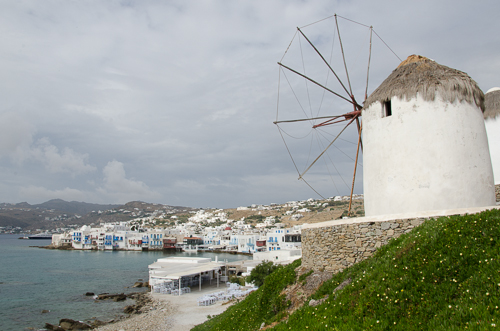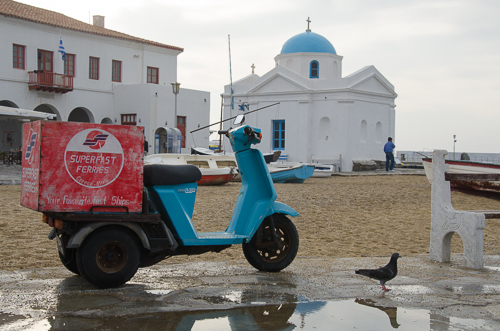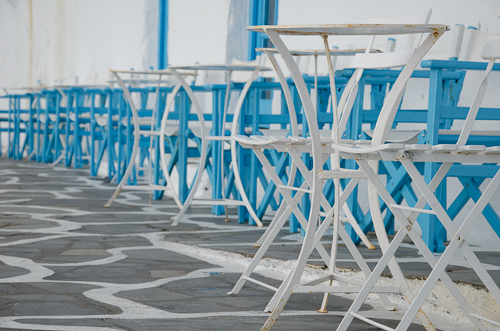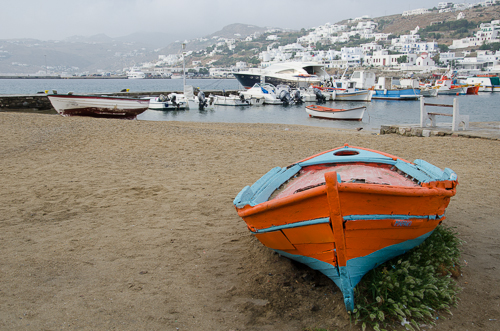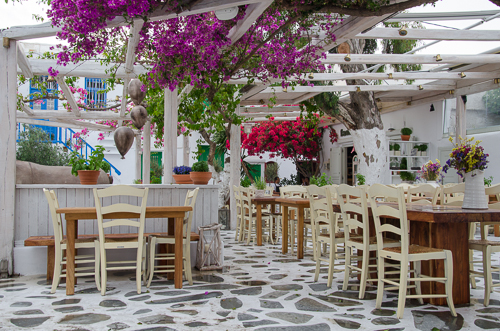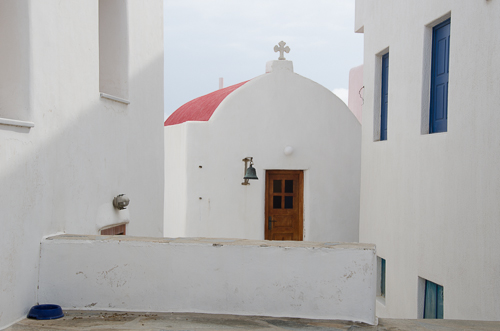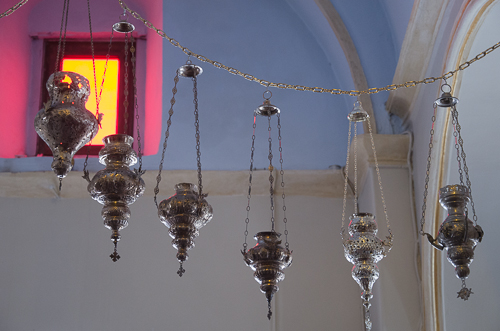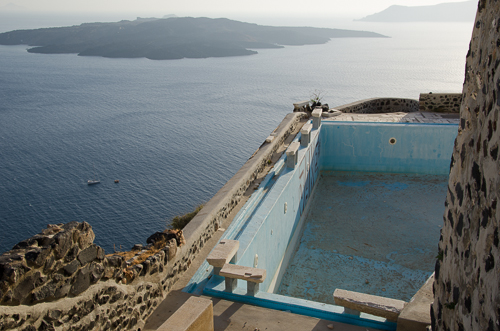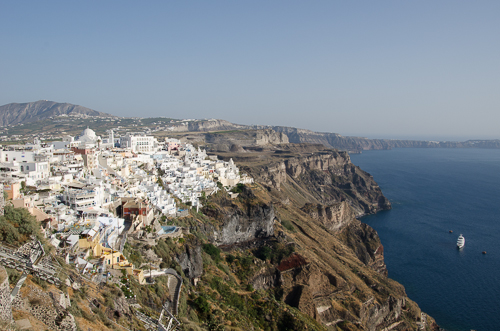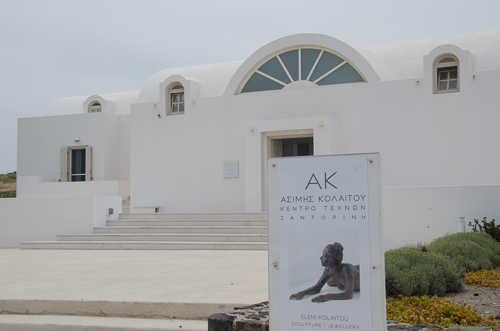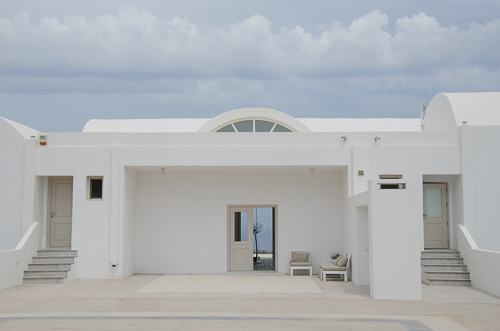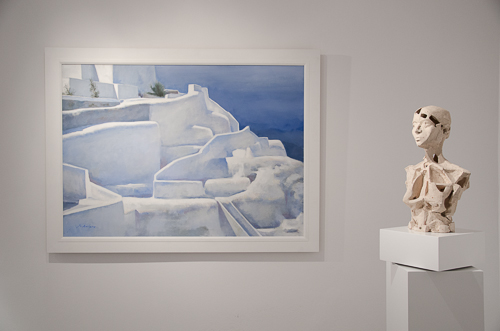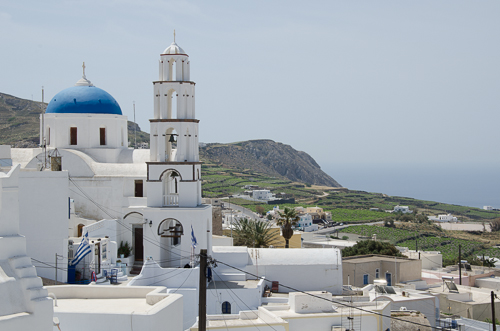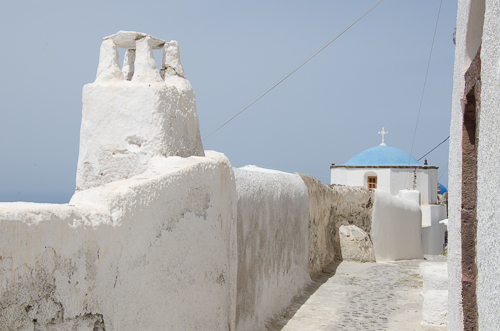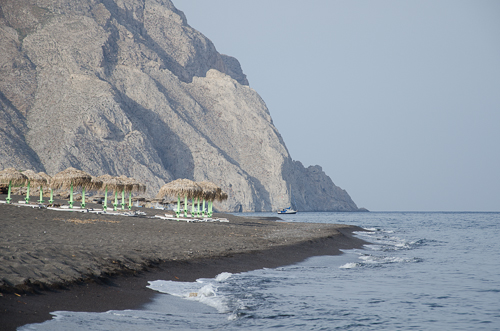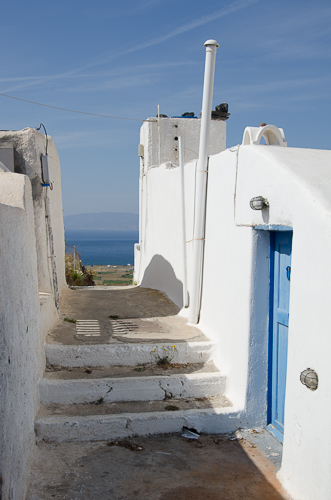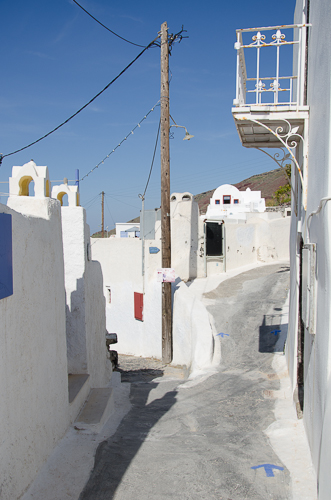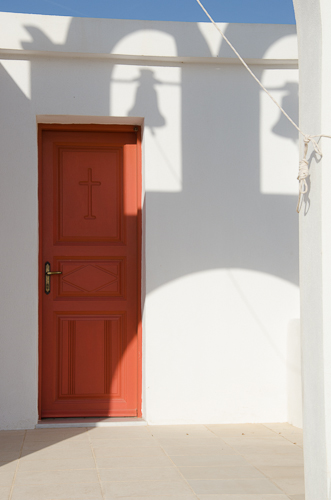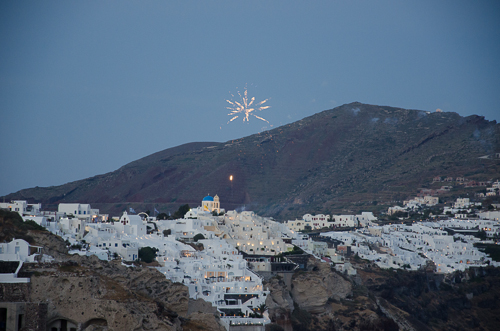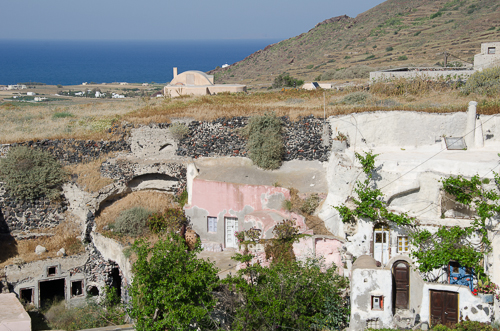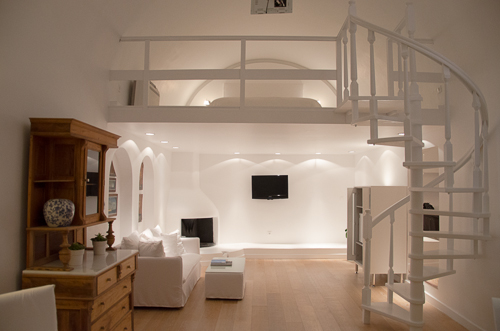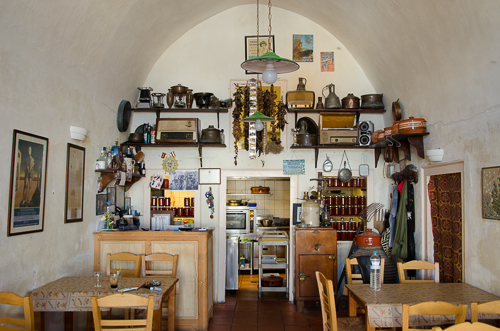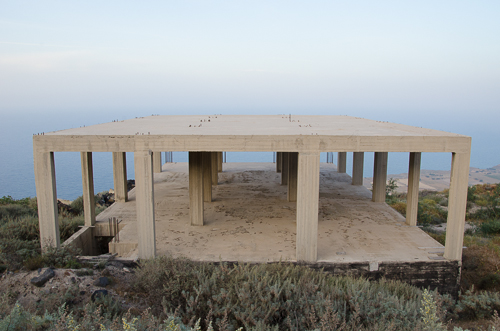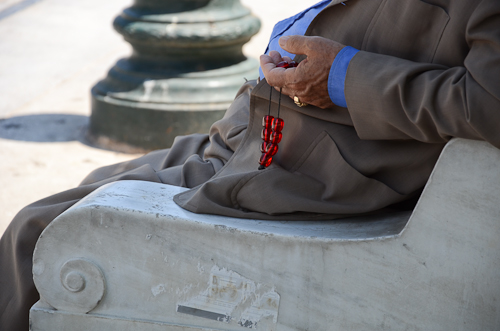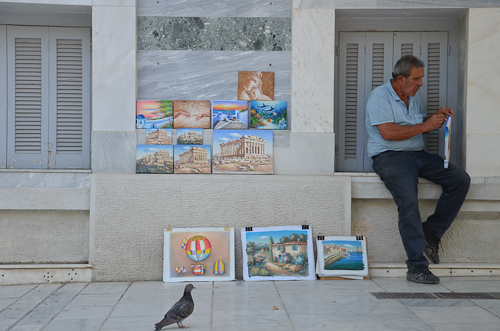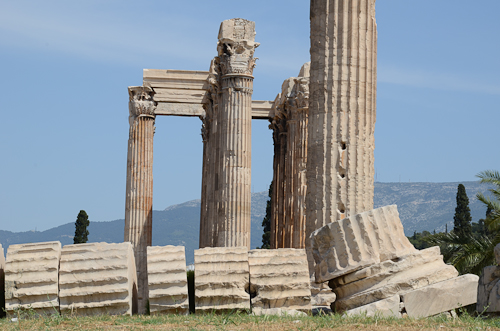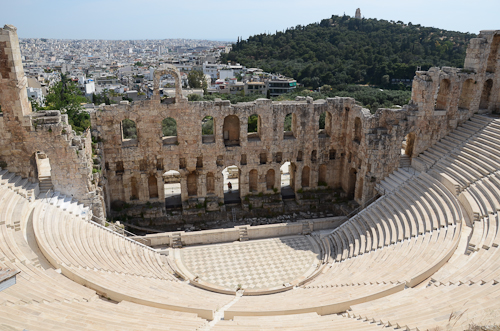Greece
Firá (Santorini) /
Firá covers Santorini island’s volcanic edge with layer upon layer of hotels, cave apartments, infinity pools and swish restaurants, all backed by a warren of narrow streets lined with bars and shops. It is a vision of dramatic cliffs and low-lying cubical buildings made of whitewashed local stone.*
The town’s small scale doesn’t deter the cruise ships from all over the Mediterranean and Aegean seas that descend upon the Old Port. Its central location makes it a good base to access many other parts of the island. Fortunately, in the early evening the multitude of passengers return to their vessels and the local restos and cafés taken on a more relaxed atmosphere.
Built on the edge of a 400m high caldera on the crescent-shaped island’s western side, Firá is accessed from sea level by a cable car, donkey ride, or by foot (587 steps) along a meandering rocky path (trafficked by donkeys).
Christoforos Asimis is regarded as one of the island’s most significant artists. For seven years he created luminous religious paintings that fill the interior of Firá’s Cathedral after it was rebuilt following the area's major earthquake of 1956.
The newly established AK Asimis Kolaitou Art Foundation (pictured below) brings together the work of the revered Santorinian artist as well as that of his partner, Eleni Kolaitou (sculpture & jewellery).
Located on the main road from Firá to Pyrgos, the gallery opened its doors early this summer. Designed by son Katonas, who also exhibits his paintings on site, the building features the artists’ residence, studio, and indoor exhibition spaces as well as outdoor venues for music, drama or various performance art events. I had the unique opportunity to interview the family of artists. Here is a video showcasing some of their work.
Christoforos Asimis’ paintings (above) explore the magnificently changing light and landscape of the artist’s home town. It is not difficult to find a lifetime's worth of inspiration here. Island bliss.
*or limewashed with various volcanic ashes used as colours
A day trip around Santorini /
Oia – Santorini’s jewel /
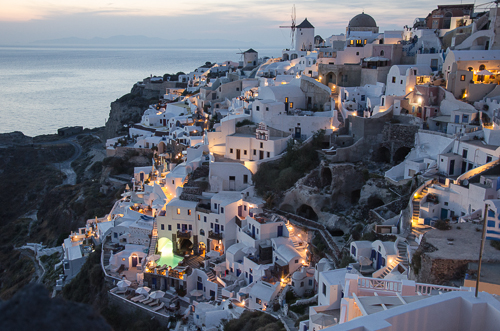 Unfolding along volcanic rocks, the traditional village of Oia extends for almost 2km along the northern edge of the caldera that forms the island of Santorini.
Unfolding along volcanic rocks, the traditional village of Oia extends for almost 2km along the northern edge of the caldera that forms the island of Santorini.
The topographical particularity of this locale is staggering. Santorini’s central part collapsed as the result of a big volcanic eruption in 1660 B.C, forming this imposing cauldron-like feature. Oia can be reached by a road that meanders atop steep cliffs along the eastern periphery of the island. Sections of this road become so perilously narrow and ridge-like that it can barely accommodate two lanes of traffic. Perched 70-100m above sea level, Oia itself is divided by the central road into two sections: one facing the caldera cliff, characterized by white-painted dwellings, once used by seamen, carved into niches in the rock; and the other, a wide swath of largely agricultural land marked by conventional houses.
The ground is composed of successive layers of fragments and lava. The uppermost layer consists of pumice stone and a sub-white ash called ‘theraic earth’ that is easily excavated and gave rise to an underground cave habitation pattern with vault-like spaces receiving light from small openings on the built-out front. Many of the simple seamen's houses have become guest homes, hotels and restaurants, with narrow passageways running between them.
Oia seduces visitors with its blue domed churches, sun-bathed verandas, and quaint cobbled alleys lined with taverns and shops. But most of all, it is renowned for its enchanting sunsets, best experienced at the ruined castle at the tip (above).
A differentiating architectural element in the island’s vernacular is the vaulted roof of dwellings that resulted from their subterranean typology. It became more common after strong earthquakes in 1956 struck the island and destroyed or damaged half of its buildings. Restrictions to new construction have been put into place in order to minimize risk from future earthquakes and to preserve and restore – or find new uses for – traditional settlements.
A number of unfinished construction sites dotting the Aegean landscape stand in watchful reminder of the harsh economic winds affecting Greece.

